This post contains affiliate links. By clicking on the link and making a purchase, I may receive a small compensation at no extra cost to you. I only promote products that we love and use in our homeschool. Please click here for full details on my Disclosure Policy.
I received a complimentary product in exchange for an honest review. The opinions expressed in this review are my own opinions of the product and I was not paid to give a positive review.
Do you have glossophobia? It’s a big word, but glossophobia means the fear of public speaking. It is definitely a fear many people have, yet it is an important life skill. Fortunately, the Institute for Excellence in Writing (IEW) has a new program, Introduction to Public Speaking, for teens to help kids learn this valuable life skill.
According to the National Social Anxiety Center, the fear of public speaking is the most common phobia. Can you imagine? Even more than spiders (ha, ha).
However, even if you or your child’s fear isn’t as extreme as a phobia, many people will admit to sweaty palms, stomach butterflies, and nervousness. I know I am one of them.
With IEW’s new public speaking program, middle and high school students can learn effective communication skills to help them throughout their lives.
I was fortunate to receive a complimentary product of Introduction to Public Speaking to review. Our family is a huge fan of IEW (and Mr. Pudewa), so I was excited to review this new program.

Table of Contents
- Introduction to Public Speaking
- How This Program Teaches Public Speaking
- Introduction to Public Speaking in Our Homeschool
- Final Thoughts
Introduction to Public Speaking
My kids, especially my daughter, have experience with public speaking through 4-H and Scouts. My daughter was part of a 4-H Communications team and has competed (and placed well) in state and multi-state competitions.
However, her brother isn’t as strong with public speaking. So, I decided this would be an excellent opportunity for my son to bolster his confidence and skills in this area as he gets ready to enter high school. After all, my daughter didn’t learn her public speaking abilities from me.
Overview of Introduction to Public Speaking for Teens
Introduction to Public Speaking is a 12-week public speaking curriculum for grades 6-12. With this course, you receive a student manual, a teacher manual, a Portable Wall (quick reference of important Public Speaking Information), and video lessons (either online streaming or DVDs).
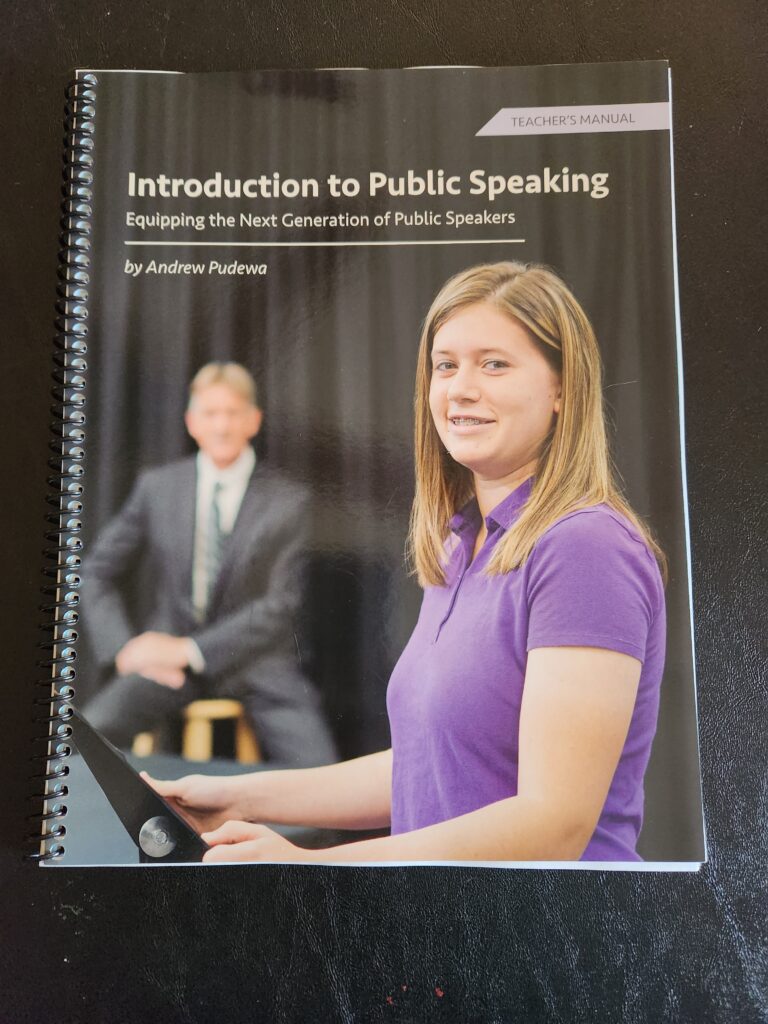
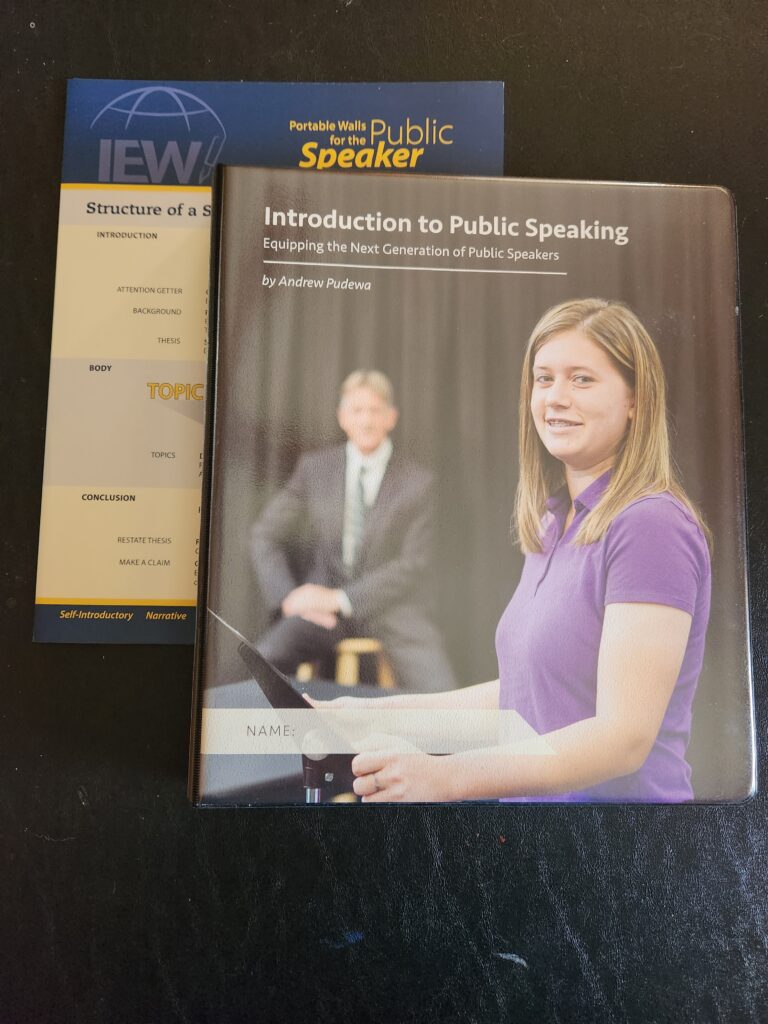
For this review, I chose the forever streaming option. This way, we weren’t tied to a DVD player. My son could watch his lesson anywhere.
Each lesson spans a week. However, you can adapt it to your student’s needs.
The lessons are well-planned out for you and your student. Take a look.
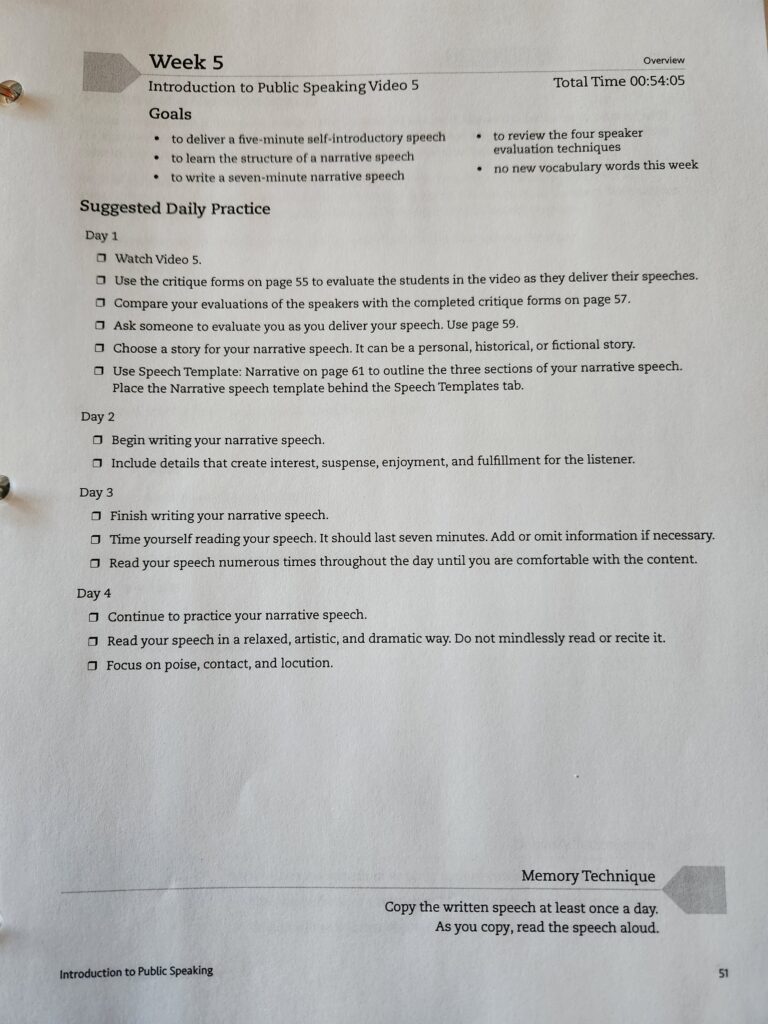
As you can see, you have goals for the week and a suggested daily practice schedule. You can even see the running time for the week’s video. Most videos are around an hour. Some are a little longer, and some a little less.
The daily work is thoroughly mapped out. My son never had any issues knowing what to work on.
All the materials for the course are kept in your student’s binder.
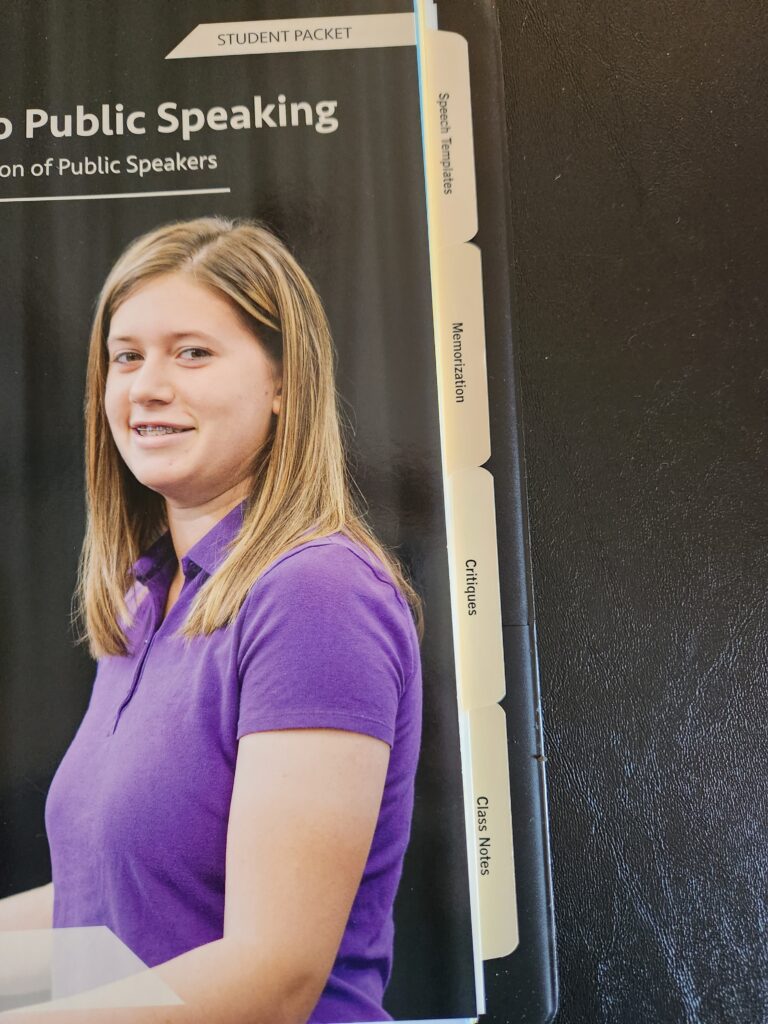
Inside the binder are:
- Handouts
- Critique sheets
- Notes
- Key Word Outlines
- Student speeches
- And more.
The Teacher Manual duplicates the Student Manual plus includes additional notes to help the parent.
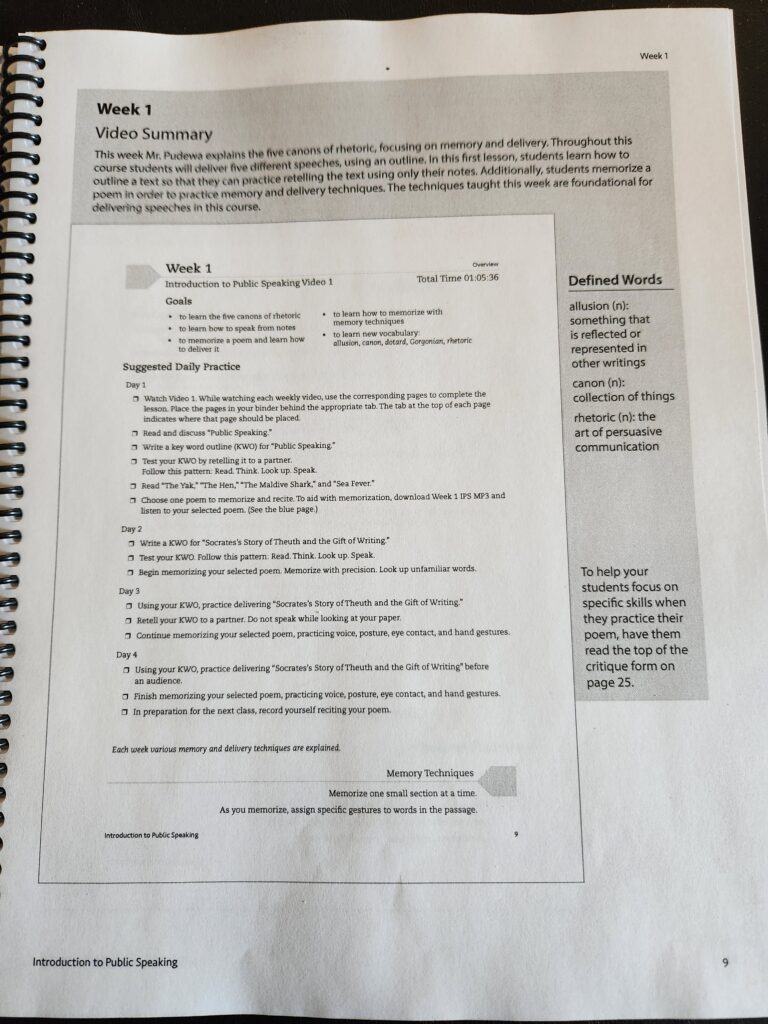
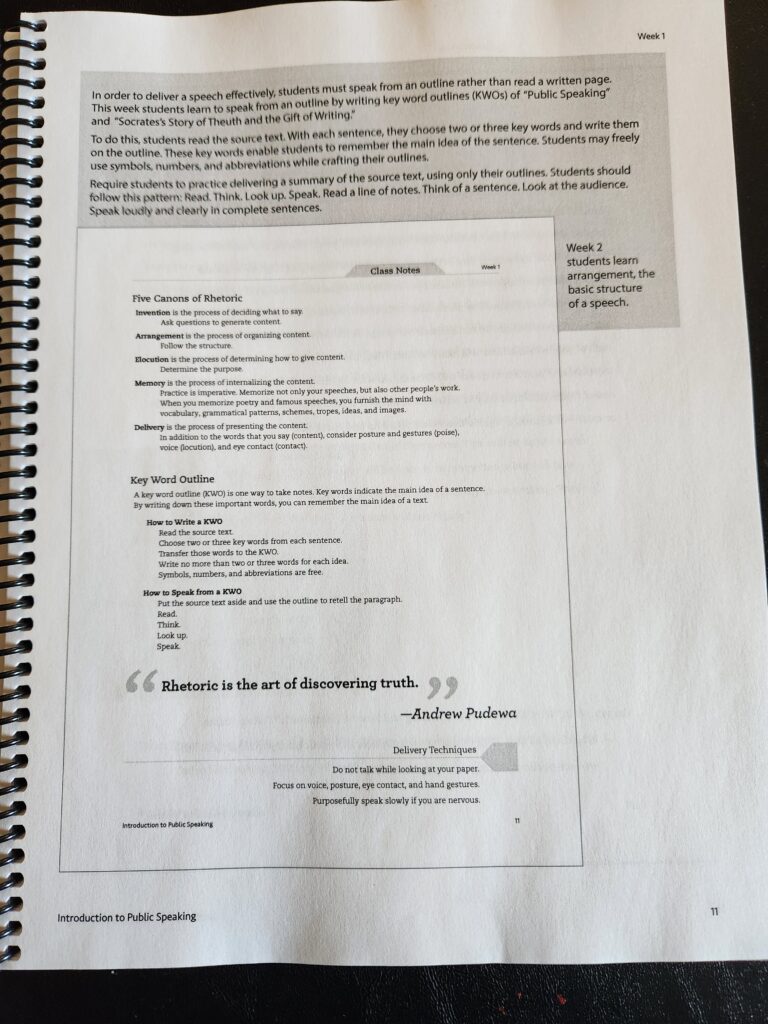
This is very helpful in understanding what your child is working on and how to help.
So, that is a quick overview of the Introduction to Public Speaking Course materials. Now, I’ll get into the program itself.
How This Program Teaches Public Speaking
One of my favorite things about IEW’s curriculum is that there is a lot of overlap in format. So, if your kiddo is familiar with their Structure and Style Writing Curriculum, they will see similar teaching techniques. However, you don’t need to be familiar with IEW to do this program.
As with other programs from IEW, Introduction to Public Speaking is taught by Andrew Pudewa. If you are not familiar with him, he is an EXCELLENT instructor. He is very engaging.
Mr. Pudewa relates well to kids of all ages. He likes to share “Dad” jokes now and then, which is endearing. My son comes to expect it and can’t wait to see if he can figure out the punchline himself.
Inside the Program
The course starts simple. Kids define public speaking (“Five Canons of Rhetoric”) and look at what people look for in an excellent public speaker (poise, locution, contact, and content). They also learn to memorize a poem or speech using a Key Word Outline (KWO).
Kids work with Mr. Pudewa in defining how to assess someone’s public speaking skills. This is an excellent technique to make sure kids understand how they will be critiqued and what is expected.
Your teen will even assess the students in the video and have a copy in their binder of how Mr. Pudewa assessed the student in his class. My son liked this. He put a lot of thought into critiquing the students and was anxious to see how his scores compared to Mr. Pudewa’s.
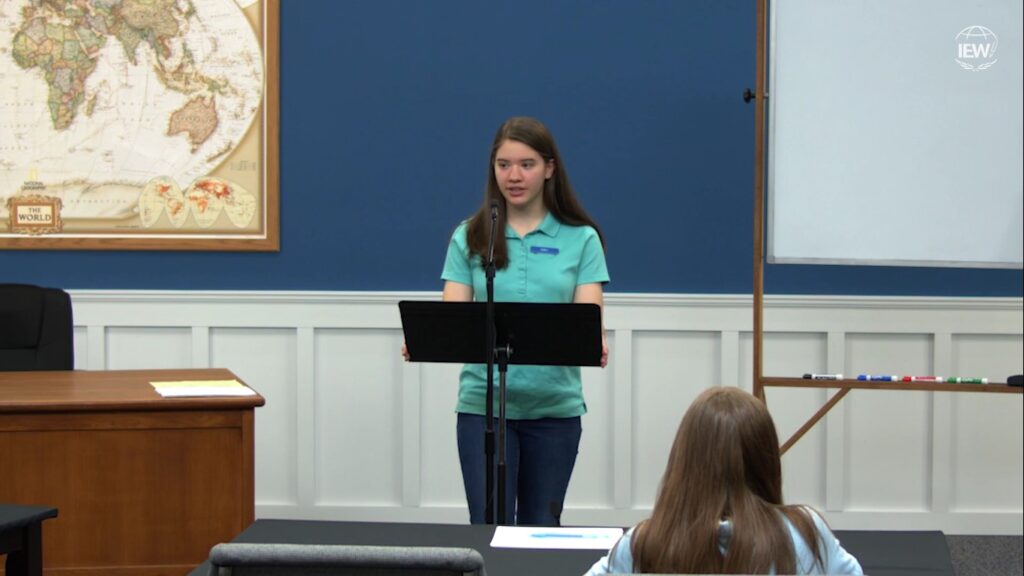
Early on, kids also learn to make Key Word Outlines (a familiar teaching technique to other IEW courses) and how to memorize information. Kids are shown various memorization techniques so kids can pick one that will help them learn poems and later their own speeches.
My son found that writing a line and slowly erasing words in the sentence helped him memorize information quickly.
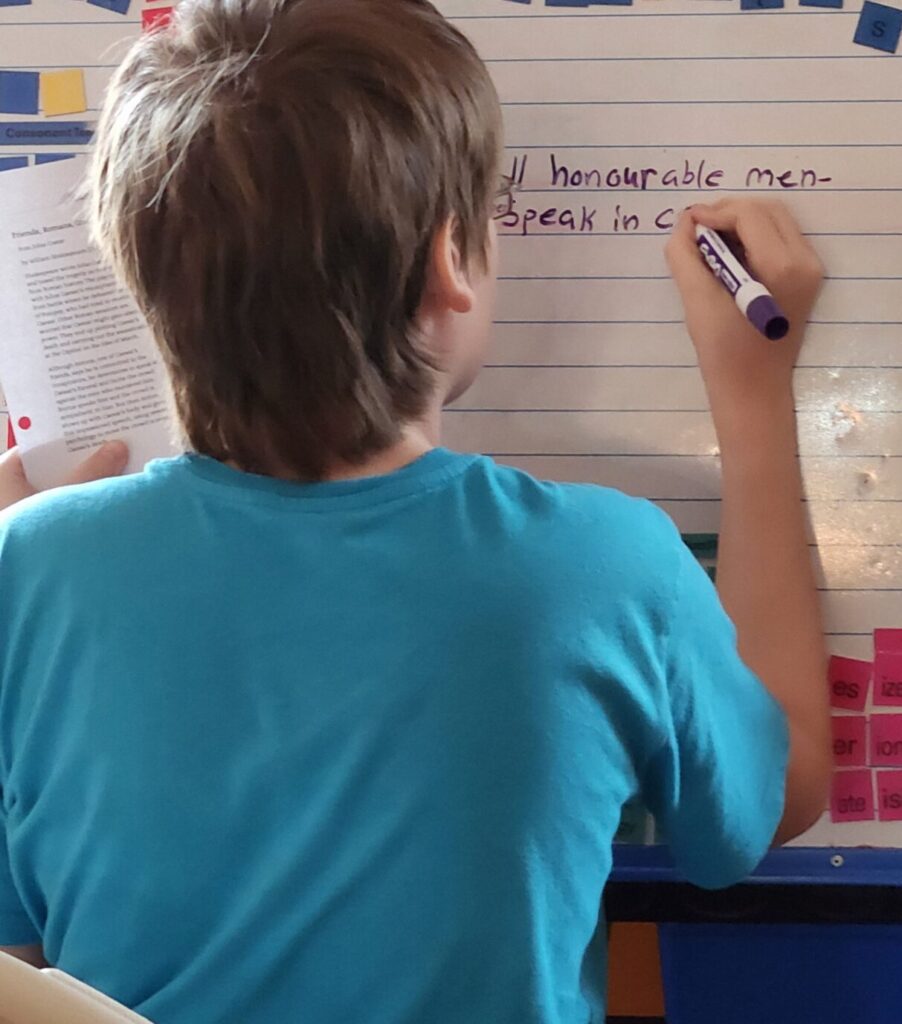
Right from the start, students view and assess the students in the video, watch exemplar speakers (an exemplar is a person seen as an excellent example of a public speaker), and start memorizing and writing speeches.
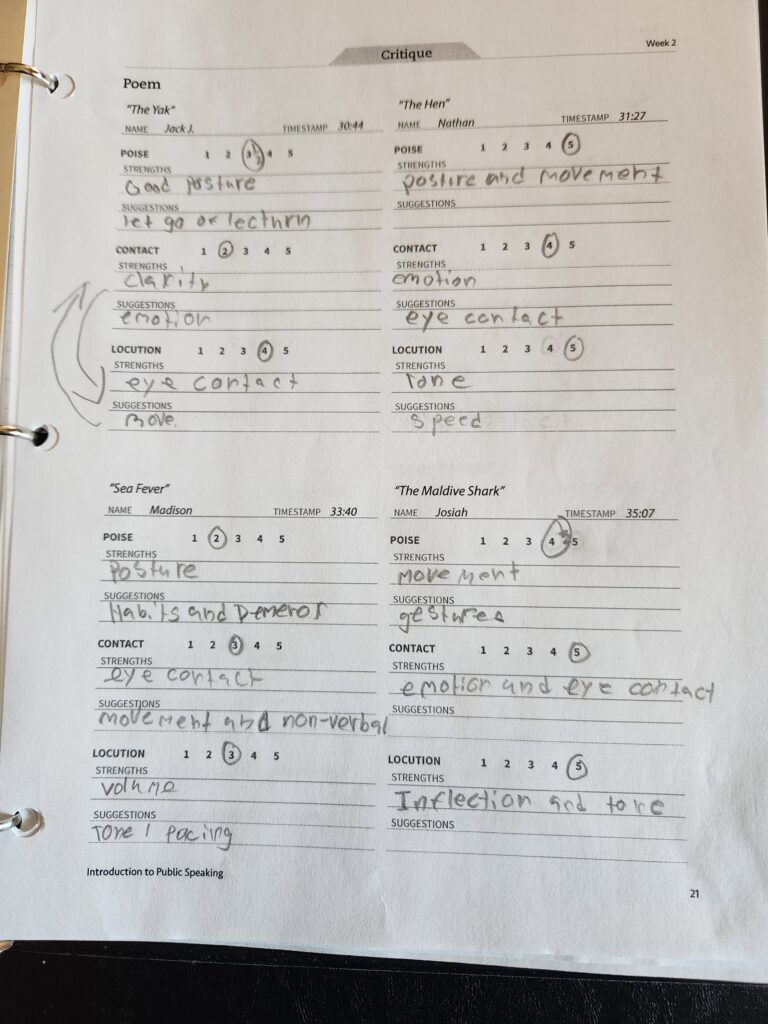
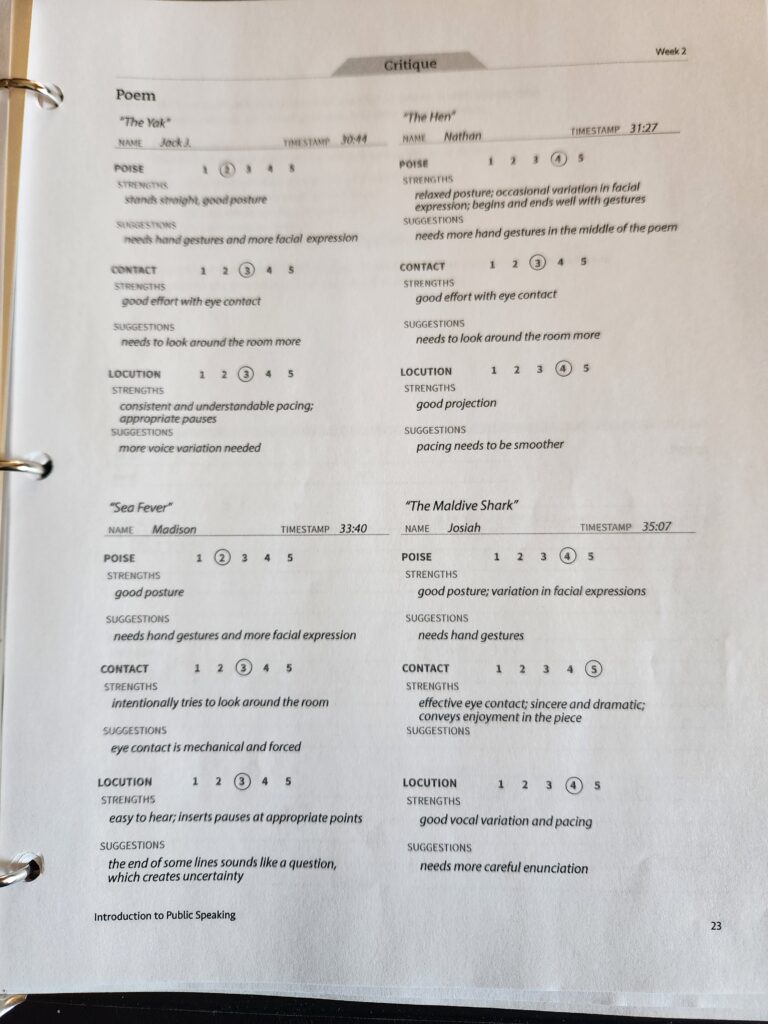
The first speech of their own that they write and present is an introduction about themselves.
The program builds upon itself and does so in such a way that kids can slowly apply the public speaking skills they are learning.
Slowly, I watched my son’s confidence increase. Plus, he found a better way to memorize information without relying on a full poem or speech to be in front of him.
Even in my daughter’s competitions, many of the competitors relied heavily on reading their speeches. I am glad my son is learning NOT to do this.
Introduction to Public Speaking in Our Homeschool
So, my son is at the end of 8th grade, and I wanted to make sure he had solid public speaking skills under his belt as he started high school.
Soon, he’ll be going before the Eagle Scout board for a project review, and the skills he’s learning in this public speaking course for teens will help immensely!
We haven’t completed the program yet because we needed to take things a little slower. My son has a hard time sitting and listening to long lessons. The videos are around an hour, so we broke up the video over two days.
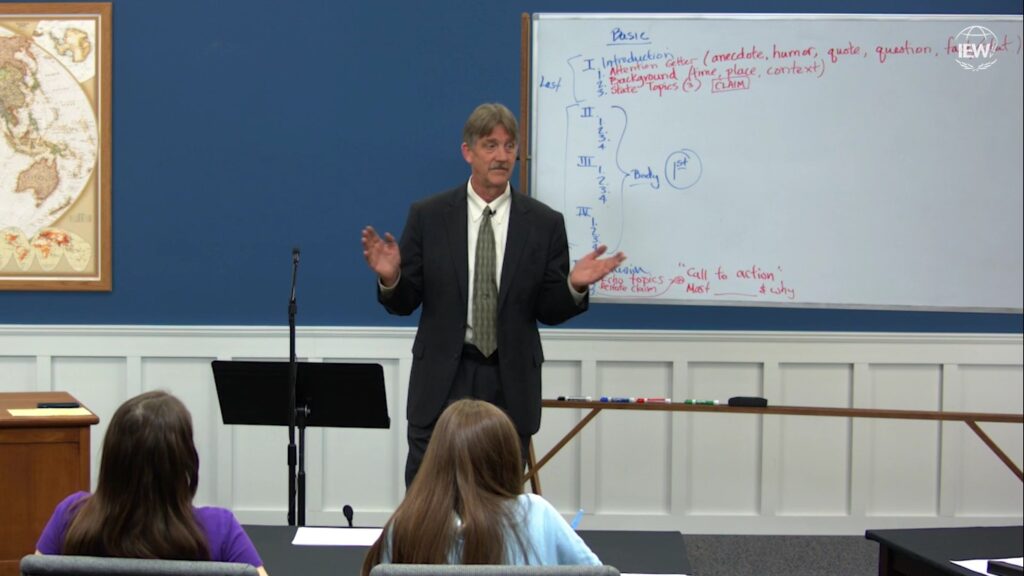
Because the student manual provides a complete outline for each day, my son could do this program independently. However, we watched the videos together, and then he’d go off and do the rest of the work on his own until he needed to do his presentation.
Because the video lessons were so thorough and clear, my son could work on assignments with no problem.
When I asked my son what he thought, he said he really liked the program. He said it was like doing writing class, except he writes first and then does a key word outline (we use IEW’s writing program). So, he liked the consistency in the teaching method used in this program and his writing.
Plus, public speaking for teens uses a teaching style that works for my son. Concepts are explained and broken down into smaller pieces; kids practice with the instructor and then try it independently. Not to mention, there is always a clear format to follow.
Final Thoughts
I think IEW has a winner with this introductory public speaking program for teens. Kids in grades 6-12 will learn valuable communication skills that will teach them to be competent public speakers. Plus, the program gives them plenty of opportunities to practice their skills.
Students learn:
- What public speaking is
- The characteristics of an excellent public speaker
- How to organize speeches
- The best practices of public speaking
- How to critique others and receive feedback
Students do this through:
- Watching exemplary public speakers and other students just like them
- Discussions on public speaking techniques
- Plenty of practice
- Engaging in critiquing others
Introduction to Public Speaking by IEW is a hit in our homeschool. Be sure to look into it if your child needs help with their communication skills. After all, public speaking is a great life skill to have.
Happy Homeschooling!
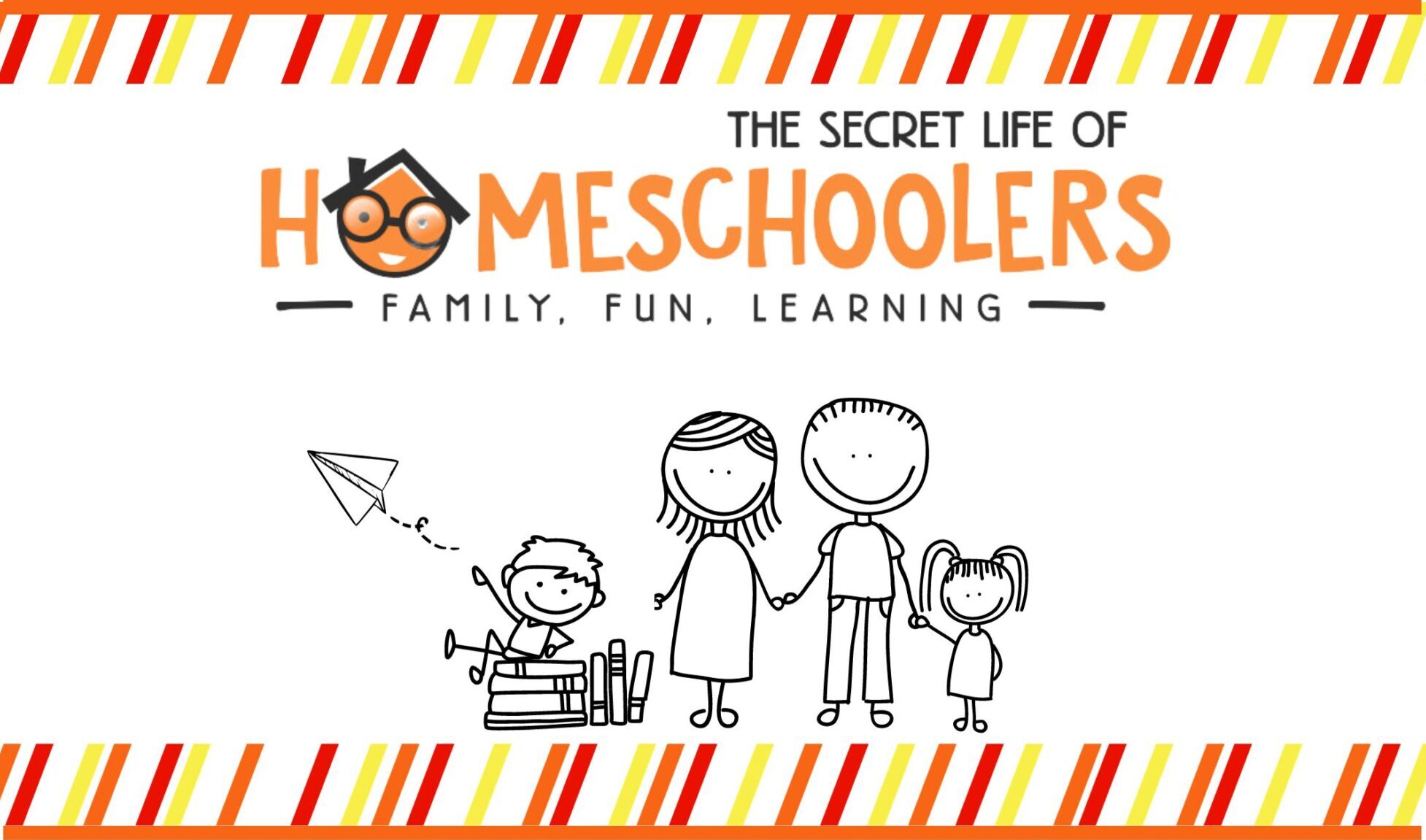
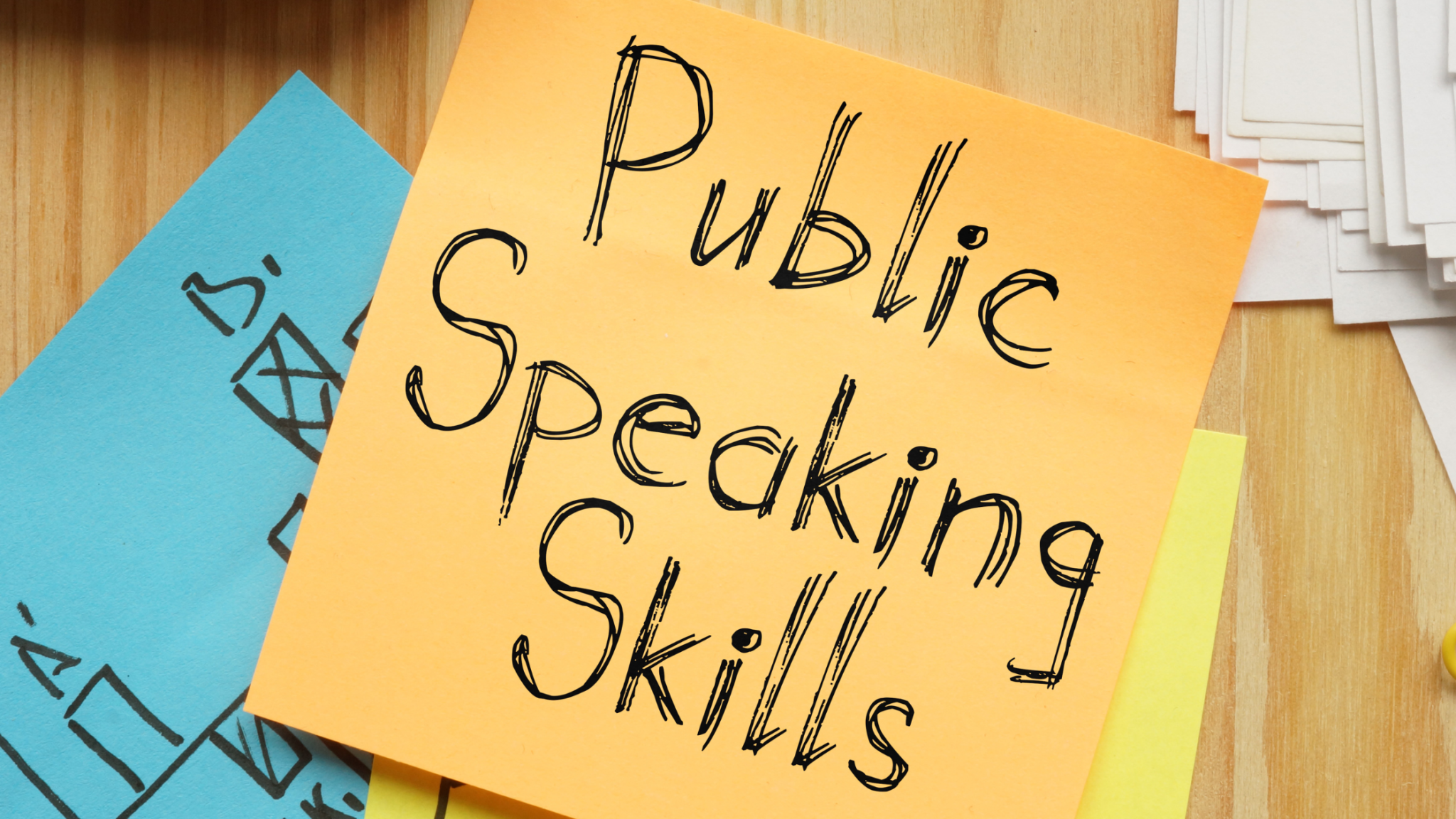
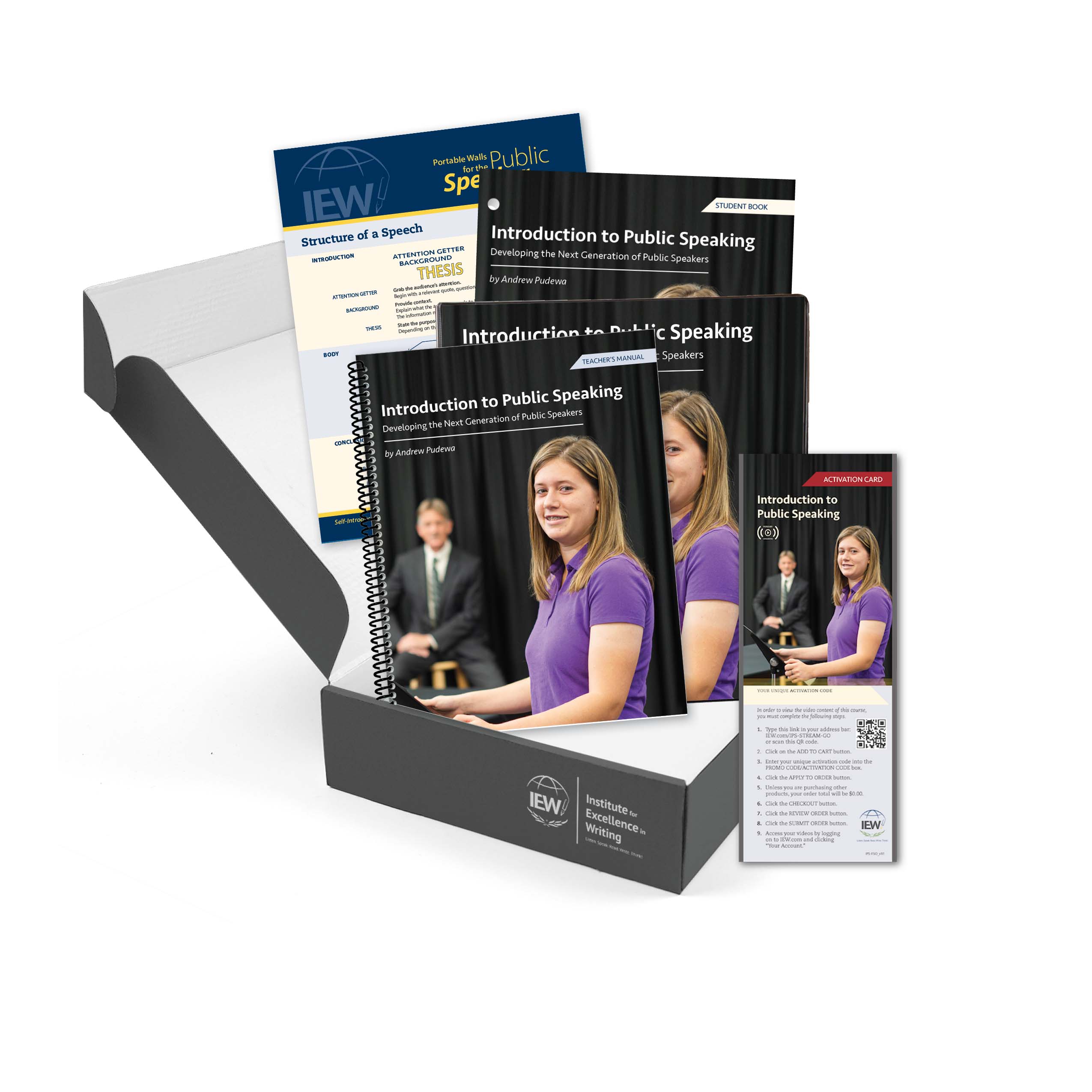

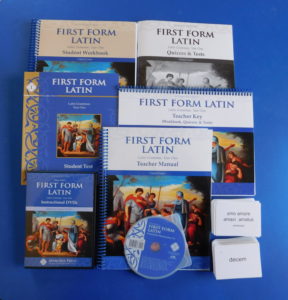

This is fantastic! I sort of want to go through the course myself!
Thanks so much!
About how long each week would you say this course takes to complete?
Hi Rebekah! That’s a good question. This public speaking program is a very thorough program. There is a four day a week schedule. The first day is the longest because the videos are around an hour. The first few weeks the videos are a little over an hour. Each day, I’d say kiddos might spend 30 minutes to and hour. It really depends on the child. You can certainly adapt it, though. I know my son didn’t want to sit through hour long videos, so we broke it up over a couple of days. We couldn’t finish the program in 12 weeks doing our slower pace, but it didn’t matter for us. That’s the beauty of homeschooling. You can adjust your curriculum to fit your child’s needs. I hope this helps.